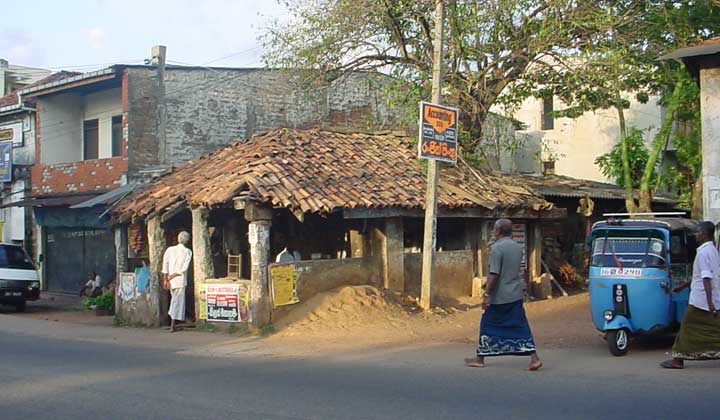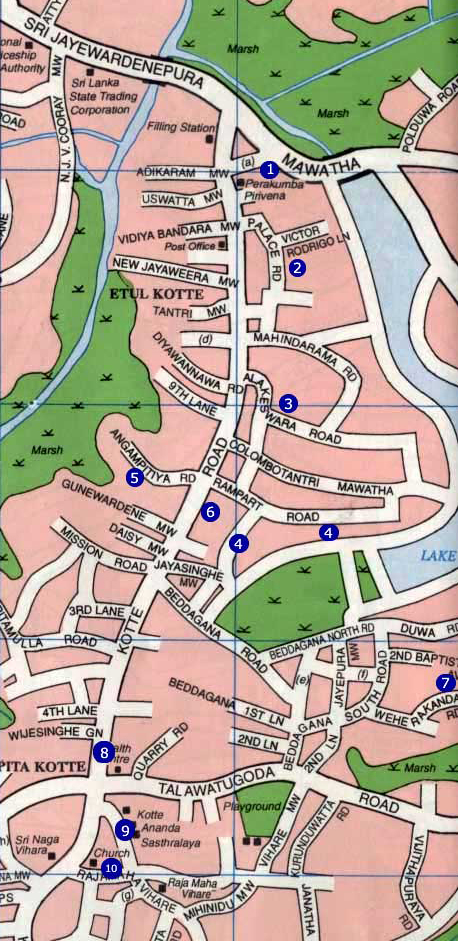The Gal Ambalama:
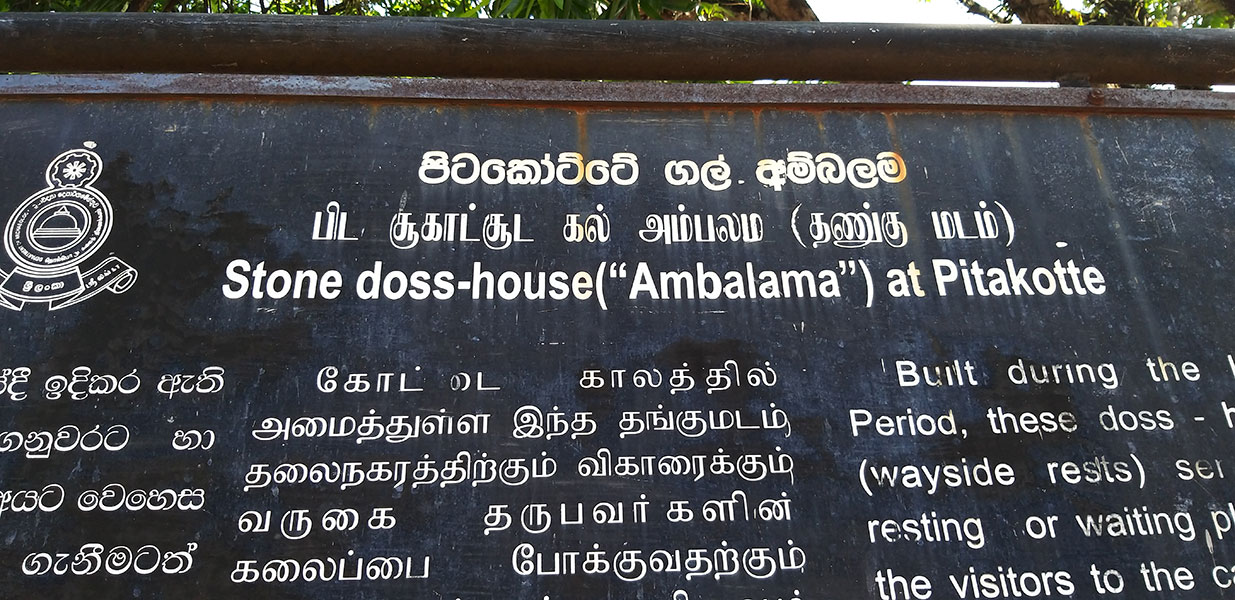
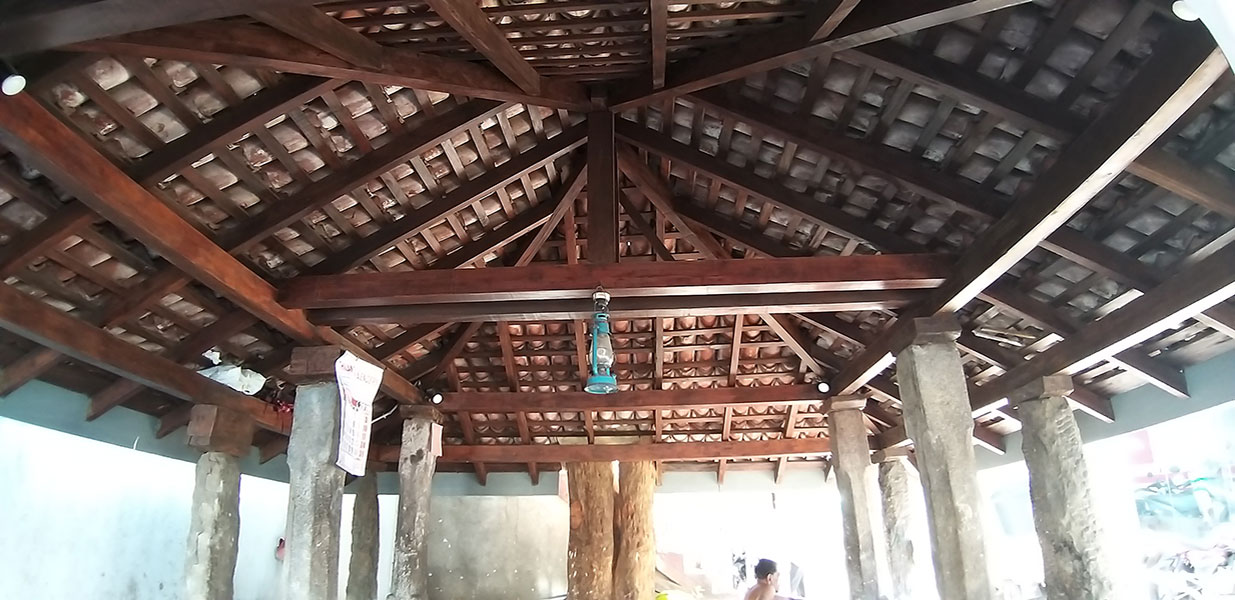
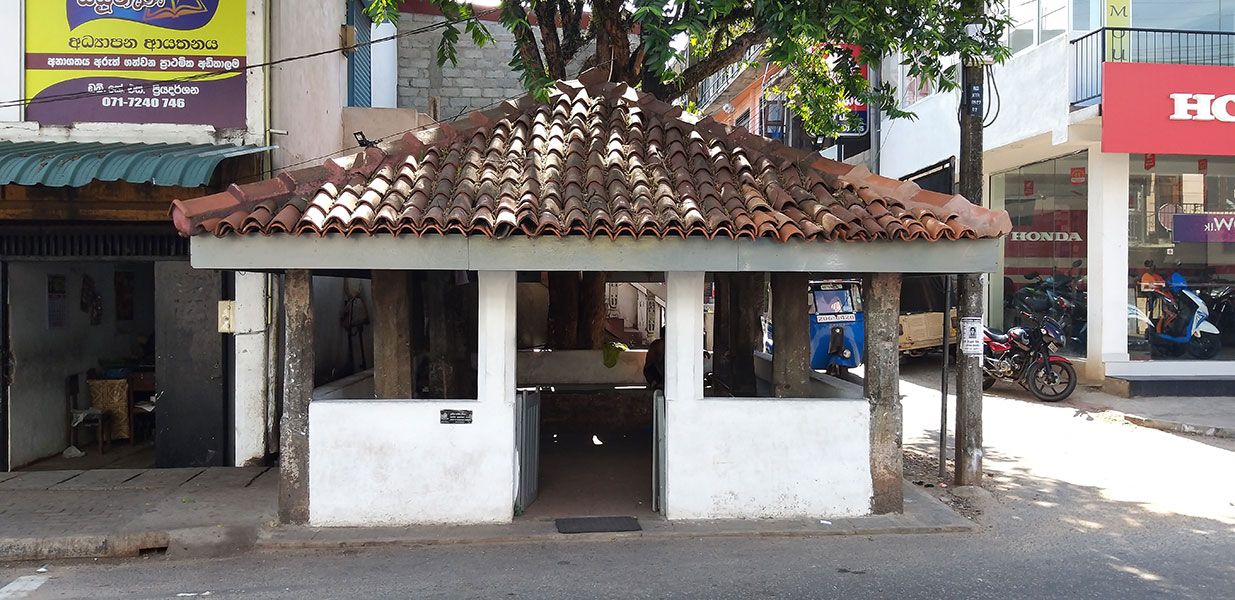

The Gal Ambalama (2003)
 The Gal Ambalama (2019)
The Gal Ambalama (2019)
The above picture shows the ‘Gal Ambalama’ (or the resting place for the traveler) around 2003 (and 2019). It is situated in close proximity to the Pita Kotte junction. It’s counterpart, the ‘Mati Ambalama’ situated closer to the fortified city has disappeared many years earlier. In certain instances the Ambalama has been attributed to a much later British Period. Sir Paul E. Pieris places this Gal Ambalama in the Kotte period and attributes it to a part of the outer defenses.(2)
‘Half a mile further South ran another considerable moat crossed by a bridge; this formed an outpost where a guard was usually stationed to protect the approach to the capital, and derived its name from the Gal Ambalama which stood close by. From here ran the road which led to Colombo’
The Ambalama was dismantled and rebuilt (moved) a few feet back in 2004 for a road widening project. Today it has a brand new roof, and walls, but lacks the ‘old world’ charm. This photo can be compared with the one taken in 2019 to check the movement.
The display board put up at the site describes the place as a Stone doss–house. Merriam-Webster defines the word as ‘chiefly British: a cheap rooming house or hotel’ and Collins Dictionary as ‘a kind of cheap hotel in a city for people who have no home and very little money’. The Ambalama is none of the above. It was only a temporary shelter for the weary traveler, to break rest while on a journey.
The historic bell found at Cayman’s Gate, Pettah:

The Caymans Gate.
The 16th century bell found in a historic belfry at Kayman’s Gate in Pettah, has it’s origins in a church of Kotte. It was first erected in a church that was built close to the Royal Palace of Kotte.
King Buwaneka Bahu built this ancient Chapel, after the crowning of Prince Dharmapala in Lisbon. He welcomed the Franciscan Friars sent by the King of Portugal on his invitation, and built a Chapel for their religious observances. The Chapel was dedicated to St. Francis of Assisi and a belfry was setup with a solid brass bell for the faithful to recite the Angelus. This Church was to be found in the place now occupied by the Kotte Urban Council cemetery (See the ‘Palace Road’).
With the Portuguese occupation coming to an end in 1658, the Dutch began a campaign of persecution against the Catholics and started demolishing their places of worship. In the process the Dutch dismantled the Church in Etul Kotte and removed the material to put up their buildings within the City of Colombo. The bell of the Kotte church was hung on a Belfry built at Kaymans Gate, in Pettah. The bell bears on it the inscription “AVE GRATIA PLENA DOMINUS TECUM BENADICTA TU IN MULIERIBUS” meaning ‘Hail full of grace the Lord is with thee. Blessed art thou among women’ (3)
The ringing of the bell at sunrise and sunset signaled the opening and closing of the eastern gates of the Colombo Fort. Until the 19th century, the Kaymans Gate was the scene of public execution by means of hanging. (4)
The Kotte Raja Maha Vihara
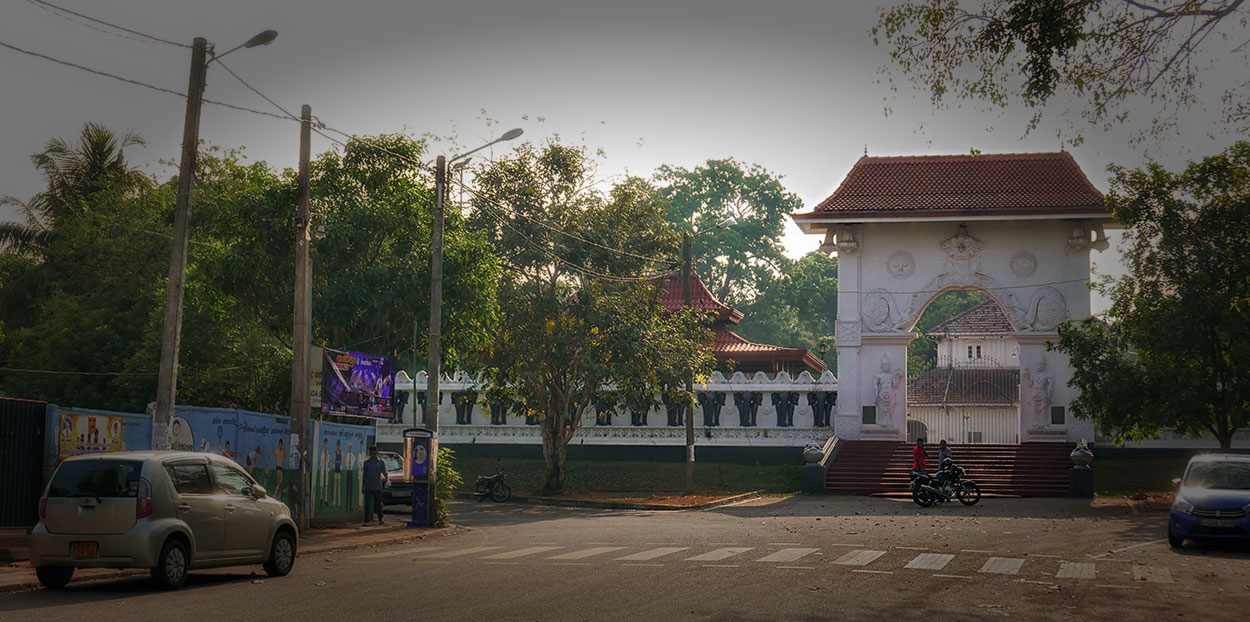
A little beyond the Kotte Tunnels (Ananda Sastralaya School) lies the picturesque Kotte Raja Maha Viharaya. You can see many stone pillars and foundations of Kabook within the large grounds and premises of this viharaya. It is said that the tunnel extension which begins from the Ananda Sastralaya, exited somewhere within the grounds (1).
Ancient Reservoir (Nippon Road)

Parts of the ancient reservoir system of the inner city could still be found. The main reservoir as per maps could be traced to the Mahindaramaya temple inthe Nippon Road. Enter the Nippon Road from near the new bridge and Ceylon Electricity Board building. As you travel some distance you will come across this picturesque sight, the pond and the ‘Seema Malakaya‘ in front of the Mahindaramaya temple complex. This pond has been one of the ancient internal reservoirs of Kotte (1). The road you travel along goes on top of the ancient bund built to protect the reservoir (1). Reservoirs such as this allowed the city to produce their rice, and hence hold on thru very long periods of a siege.
BIBLIOGRAPHY:
(1) Kotte: The Fortress, Prasad Fonseka 2015
(2) Ceylon: The Portuguese Era – Paul E. Peiris Pge 154.
(3) Kotte: Cradle of Christianity in Sri Lanka – L. U. Cabral / Spolica Zeylanica; Bishop Edmund Pieris
(4) Changing Face of Colombo – R. L. Brohier, Plate 15
Location Map – (No 10):
